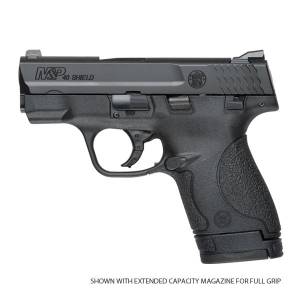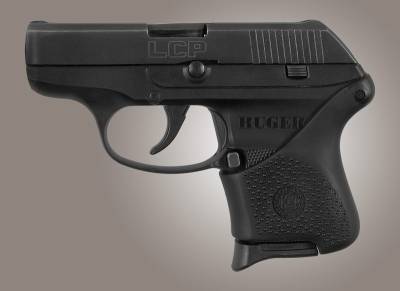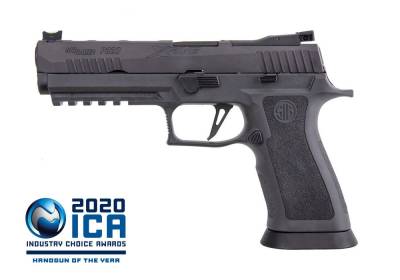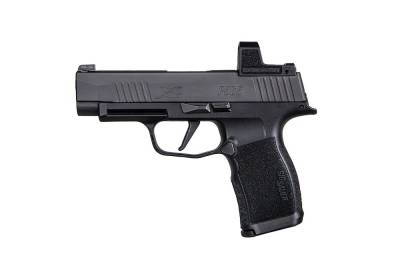Table of Contents
Trigger Types (and Issues)
The “feel” of a trigger is an important consideration for any handgun. And this includes factors such as:
- Trigger Operation (fulcrum/hinged or “straight slide” triggers)
- Trigger “pull” (force required to release the firing pin)
- Trigger Face Design (Straight or Curved)
Trigger Operation
There are primarily two different types of trigger operations:
- Fulcrum or Hinged triggers, or
- Straight Slide triggers
“Fulcrum” or “Hinged” Triggers
“Fulcrum” or “Hinged” triggers function like a lever - where different pressure is required depending upon where your finger is on the trigger. This means that if you DON'T put your finger in the same place every time, the force required to fire the pistol will be different every time. While a curved trigger face will always guide (index) your finger into the same position, that may not be “your” preferred position.
In order to improve consistency, many people will slide their finger along the inside bottom of the trigger guard to improve consistency in the pressure required to fire the pistol - even though that may not be where they would ordinarily prefer to place their finger. These people are often unaware that what they're doing is approximating the “feel” of a “straight slide” trigger (discussed below)
The “Fulcrum” or “Hinged” triggers appear to be in every “striker fired ” pistol. The below video demonstrates the inner workings of this trigger in a Glock.
“Straight Slide” Triggers
Unlike the “fulcrum/hinged” trigger, the “straight slide” trigger doesn't function like a lever (where different pressure is required depending upon where your finger is on the trigger). Instead, the “straight slide” literally slides straight back - requiring the same amount of pressure regardless of where your finger is positioned.
This allows you the flexibility to determine where you best like placing your trigger - and still have a smooth consistent trigger pull. This consistency makes this type of trigger a favorite among both competitive shooters and anyone else serious about shooting.
The “straight slide” was popularized by the 1911 pistol, the below video demonstrates the inner workings of this trigger.
While this type of trigger remains in the 1911 style pistols today, it is also in the lighter weight Staccato line of pistols.
<note important>To my knowledge, “straight slide” triggers are only available in “hammer fired” pistols.</note>
Trigger Pull
While the trigger requires a certain amount of force to fire the handgun, this force is adjustable. And there are several online videos about adjusting the trigger - or even replacing the trigger. However, as a new shooter, you should leave the trigger alone. Remember that if the pistol has a “Fulcrum” or “Hinged” trigger, the force will depend on where you place your finger. So until you train enough to consistently place your finger in the same spot, the trigger pull force will vary.
Instead, fire several different models of pistol with a goal of identifying a pistol that consistently surprises you when it fires. While you should avoid any pistol with the so-called “hair trigger”, try to find a pistol that doesn't require excessive force to fire. Most trigger pulls should be in the 4 to 6 lbs / 1.36 to 1.81 kg range.
As you train and practice, rather than trigger pull force, focus on learning to avoid “jerking” or “slapping” the trigger.
The instruction provided in the video below, “Mastering the Glock trigger”, are actually valid for any pistol.
Trigger Face Design (Straight or Curved)
Generally speaking, there are two designs of triggers for handguns… Straight or Curved.
Both the Smith & Wesson M&P® Shield™ (below left) and the Ruger LCP (below right) have curved triggers. And so does every Glock I've ever seen.
In contrast, several Sig Sauer pistols have straight, flat faced triggers, such as the P320 XFive Legion (below left) and the P365 XL RomeoZero (below right).
Remembering that all of these pistols are using a “Fulcrum” or “Hinged” trigger mechanism, the difference between curved vs straight triggers has to do with finger placement. The curved triggers are driving your trigger to a specific point, where the straight trigger allows you to place your finger here you feel most comfortable.
For example, the Smith & Wesson M&P® Shield™ drives your finger toward the center of the trigger - while the Ruger LCP trigger will drive your finger up to where it touches the frame.
In contrast, as you pull the trigger on either of the Sig Sauer pistols described, the trigger will quickly reach a point where it is at a 90º angle to the top of the frame.
Is one “better” than the other? This is arguable. And ultimately, decided by the shooter.





